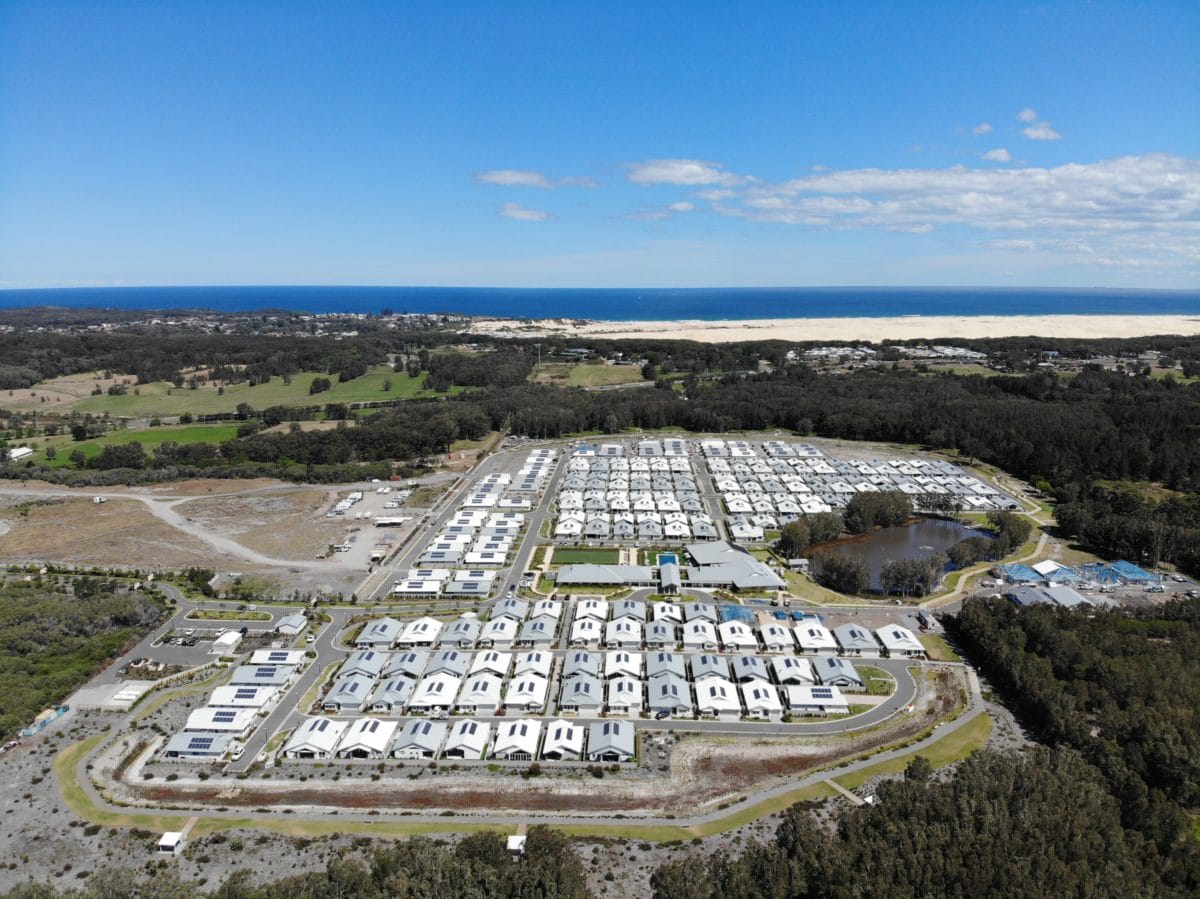Ingenia Communities Group portfolio of lifestyle and holiday developments across urban and coastal areas of Queensland, New South Wales and Victoria, will be assisted in its recent commitment to reduce carbon emissions by 30% over the coming five years by a Clean Energy Finance Corporation (CEFC) debt facility of $75 million, announced last week.
Around 7,600 people, many of them older Australians, live on Ingenia properties in rented or owner-occupied premises; and since Covid-19 restrictions eased, the company has seen a boom in Australian holiday makers at its Ingenia Holidays properties, which offer rental cabins, and caravan and camping sites.
The CEFC said its investment “is designed to demonstrate how energy efficiency and renewable energy technologies can reduce costs for residents and owners and encourage greater uptake across the industry”.
In addition to its short term emissions-reduction target, Ingenia has set a goal to achieve carbon-neutral operations by 2035, an industry-leading commitment which the company CEO, Simon Owen tells pv magazine Australia has made its 900 employees “really proud”.
Retirement communities ripe for renewables
Last year saw Ingenia publish its first sustainability report in which it identified the potential to reduce energy consumption by investing $2.5 million in solar PV installations.
So far, it has invested $1.3 million across 27 properties, which it anticipates will save more than $300,000 per annum in electricity bills.
A further 1,191 kW of solar is being installed across 23 communities at a cost of $1.2 million which will yield further expected savings of $230,000 each year.
Ingenia’s solar rollout includes blanketing the rooftops of clubhouses, or community-centre hubs, in residential developments such as the over-50s resort-style Bethania community in South Brisbane; installing solar from the start in new builds such as Ingenia Latitude One in Port Stephens; and retrofitting many of its earlier developments.
Owen said that CEFC funding will likely enable solar installation on every new residence built by Ingenia; its 3,000-home pipeline of potential developments represents a significant opportunity for CO2 displacement.
A battery of near-term opportunities
“Battery storage is also top of mind for us,” says Owen. “We’ve spent time and money internally looking at the feasibility of installing them, but the cost hasn’t quite worked out yet.”
Owen anticipates that 2021 will see the return on investment begin to add up, and that Ingenia will “start looking at installing batteries at a large scale”.
The most recent reckoning of electricity consumption by combined Ingenia properties was for FY 2020, and came in at a breathtaking, 17,746,104 kWh, but this no longer represents the total consumption of a portfolio that has continued to grow, with both new builds and property acquisitions over the past eight months. The total number of income-producing sites across Ingenia properties is now around 10,000.
Ian Learmonth, CEO of the CEFC, points out that buildings account for more than half of Australia’s national electricity use, and almost a quarter of emissions, hence, he says that, “The property sector represents a great opportunity to accelerate Australia’s pathway to a lower emissions economy.”
Following yonder Green Star
Among its ongoing emissions- and cost-reducing initiatives, Ingenia will pilot the Green Building Council of Australia’s yet to be finalised, new Green Star Homes standard on 30 new-build homes, starting at its Ingenia Plantations over-55s community in Woolgoolga, on the New South Wales mid-north coast.
The new standard assesses Australian homes against a number of criteria, including whether they’re net zero in energy use, fully electric, powered by renewables, water efficient and climate-change ready.
“Cleaner, greener homes produce fewer emissions, and they cost less to heat and cool,” said Learmonth, who added that the $75 million CEFC-provided debt facility “extends the economic benefits of clean energy technologies to residents of affordable housing through lower energy bills.”
Nomads set up for solar power
Among Ingenia’s holiday makers, Owen has observed a movement to source energy from renewables: he says that around 50% of caravaners and campers now travel with solar arrays that power at least some of their activities.
“It’s definitely a growing trend, because a lot more holiday parks are starting to charge for power use,” he tells pv magazine.
Owen is also excited about a new Ingenia proposal that could see its holiday parks offer eco cabins, which would be solar-plus-battery powered and “effectively off the grid”.
“It’s an interesting market, and I think it would enable us to tap into a new cohort of guests,” he says.
Easy on the air-con
Energy efficiency measures being introduced across Ingenia’s Holidays portfolio include “smart” air-conditioning controllers which limit selection of temperatures to a certain range, and the replacement of low-efficiency lighting, hot water systems and air-conditioners with more efficient models.
“We are actively progressing ways to innovate and create Australia’s leading communities,” said Owen; “This finance will assist us to explore and implement additional programs aimed at reducing our carbon emissions and energy costs.”
This content is protected by copyright and may not be reused. If you want to cooperate with us and would like to reuse some of our content, please contact: editors@pv-magazine.com.









6 comments
By submitting this form you agree to pv magazine using your data for the purposes of publishing your comment.
Your personal data will only be disclosed or otherwise transmitted to third parties for the purposes of spam filtering or if this is necessary for technical maintenance of the website. Any other transfer to third parties will not take place unless this is justified on the basis of applicable data protection regulations or if pv magazine is legally obliged to do so.
You may revoke this consent at any time with effect for the future, in which case your personal data will be deleted immediately. Otherwise, your data will be deleted if pv magazine has processed your request or the purpose of data storage is fulfilled.
Further information on data privacy can be found in our Data Protection Policy.